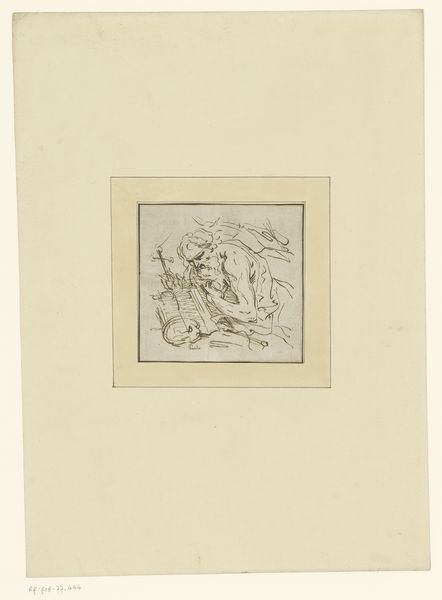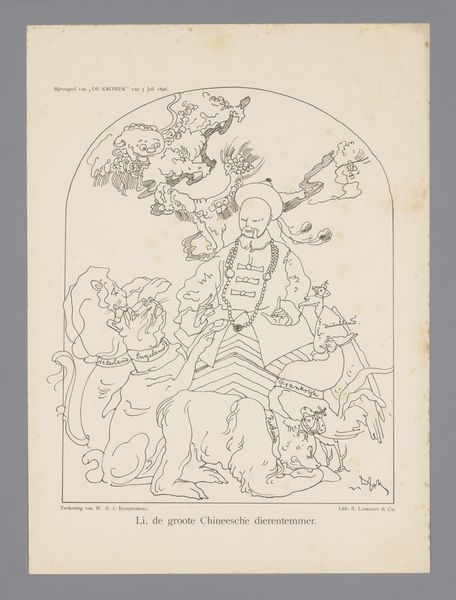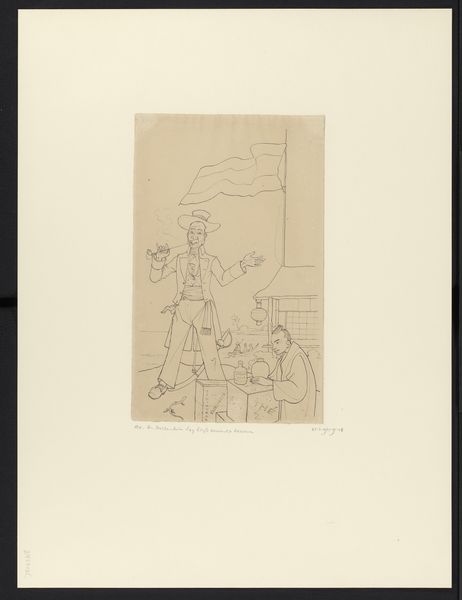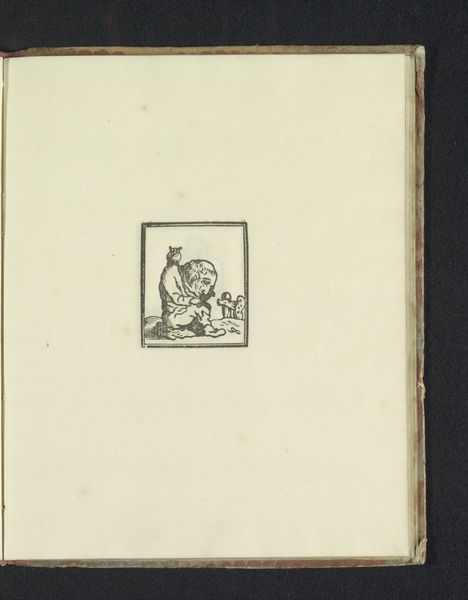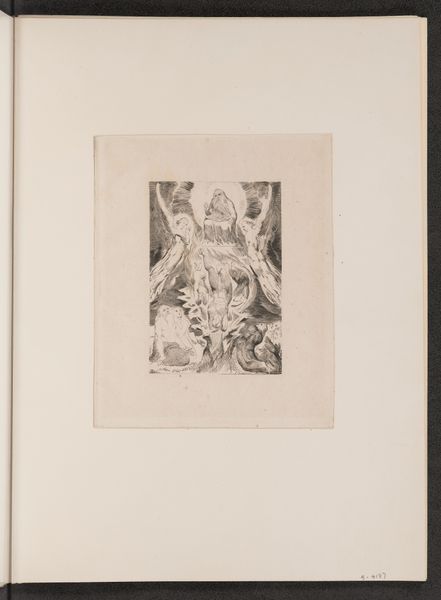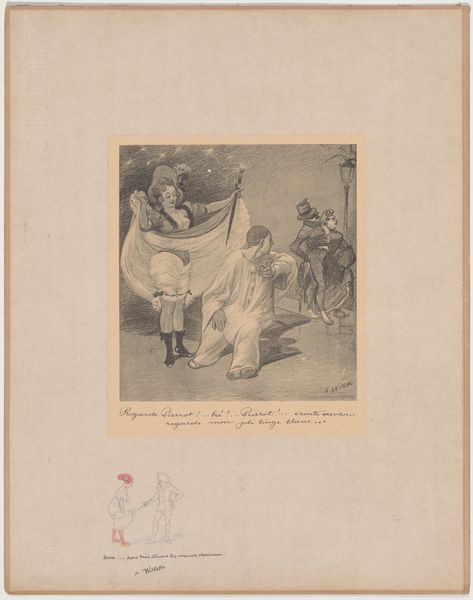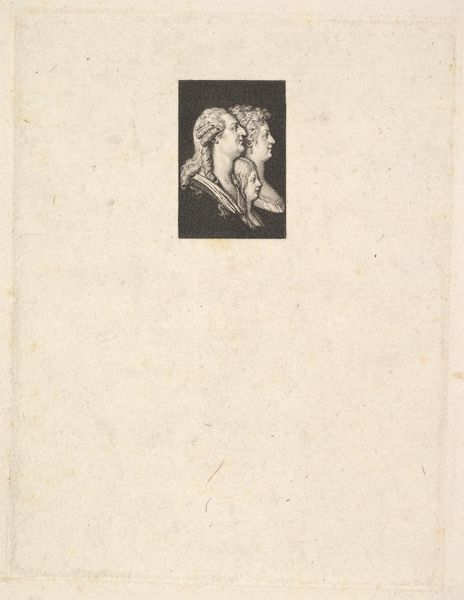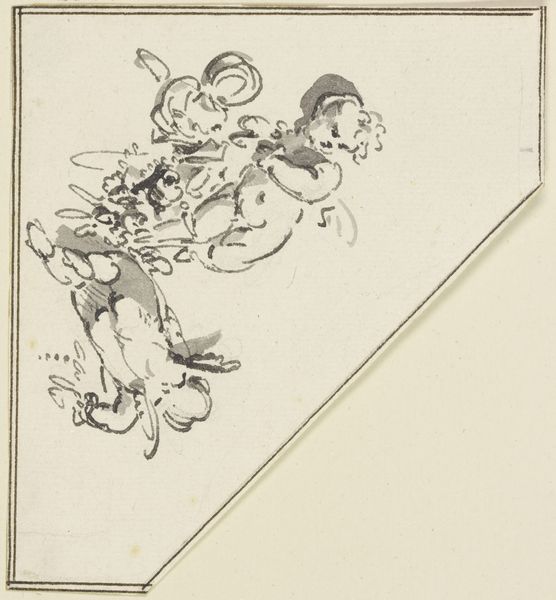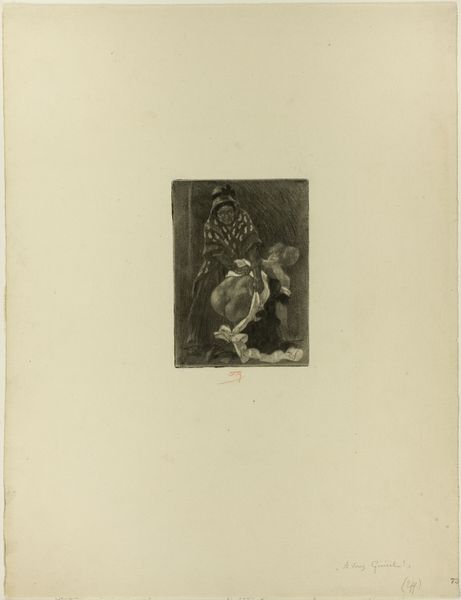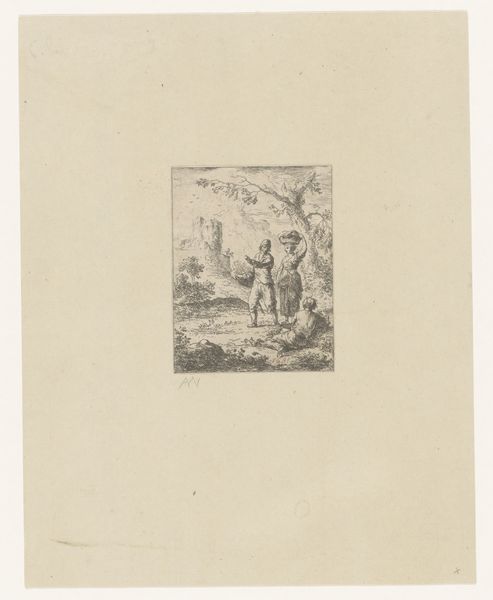
print, etching, ink
# print
#
etching
#
figuration
#
ink
#
symbolism
#
nude
Dimensions: 140 mm (height) x 100 mm (width) (billedmaal)
Editor: Here we have Gudmund Hentze's "Satyr og Baccantinde," an etching from 1901 rendered in ink. It has a dreamlike, almost chaotic quality. What do you see in this print? Curator: Immediately, I’m drawn to the process itself. This etching, reliant on acid to carve the image into the metal plate, speaks volumes about labor. Think about the repetitive, physical work of creating this image, multiplied by each print pulled. Do you think that level of detailed craft and labor challenges our idea of what "fine art" means? Editor: I never thought of it that way, focusing on labor. I guess I tend to focus more on symbolism, since I know it's part of Symbolism. The figures certainly evoke that era and it feels as though it’s pulling from classicism and Greek mythology, especially through the nude figures. Curator: Precisely! The choice of materials—the copper plate, the acid, the ink—were very deliberate. The plate itself, and where the materials were acquired speaks to a growing industry of artistic supplies at this time. Editor: So the materials tell a story not just about the image, but about the entire artistic ecosystem at the turn of the century. Curator: Exactly. Think about how widely distributed a print can be, compared to a unique painting. That suggests an intent to circulate imagery widely and perhaps democratize art and culture at the turn of the century. Does the easy consumption of this artwork change its status in your mind? Editor: That's such a shift in perspective! Looking at it now, the etching isn’t just an artwork; it’s also a document of production, access and even an artifact showing the rise of the industry! Curator: Precisely. We can study this print in terms of artistic production. It shows us a relationship with the rising role of printing as a tool to disseminate art.
Comments
No comments
Be the first to comment and join the conversation on the ultimate creative platform.


